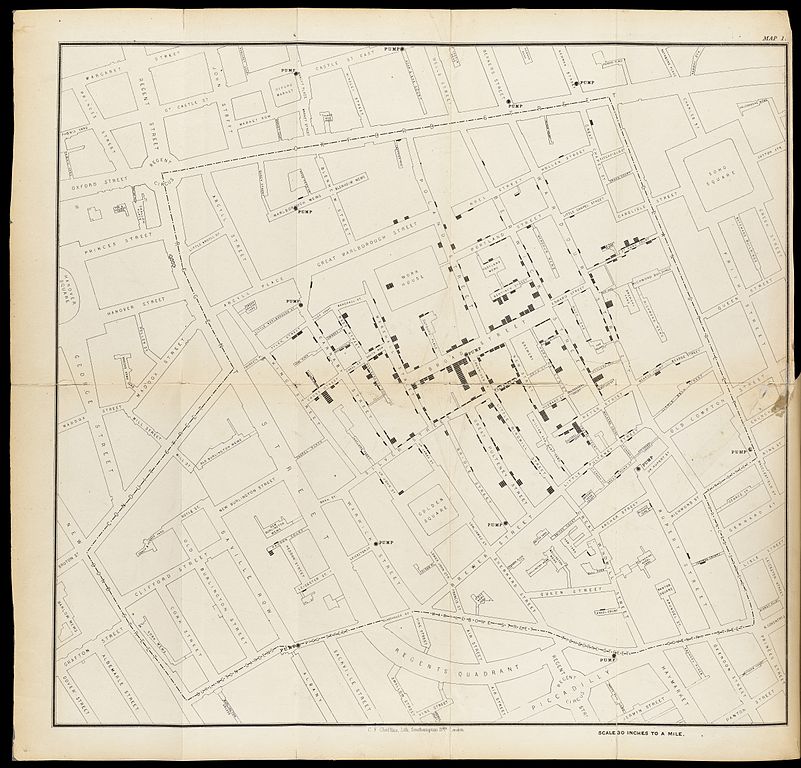Before we Start
Overview
Teaching: 10 min
Exercises: 5 minQuestions
Why are we even visualizing?
What are the metadata of this dataset?
Objectives
Get to know the importance of visualisations
Get to know the data we are going to work with
Why even visualise data?
Data can be complex. Data can be confusing. And a good visualisation of data can reduce some of that complexity and confusion.
A good visualisation can reveal patterns in our data.
A really good visualisation can even provide insight that is difficult, or impossible to find without.
A good example is this map, where the English physician John Snow plotted the
deaths from Cholera in Soho, London from 19th august to 30th September 1854.

The concentration of deaths indicated that the source of the disease was a common water pump. Removing the handle from the pump brought an end to the outbreak.
We are probably not going to discover patterns of equal importance in this course.
The dataset we are working with
We are going to study a dataset containing information on prices and other attributes
of 53940 diamonds. The dataset is included in the ggplot2 package, that we
installed as part of tidyverse
library(tidyverse)
head(diamonds)
# A tibble: 6 × 10
carat cut color clarity depth table price x y z
<dbl> <ord> <ord> <ord> <dbl> <dbl> <int> <dbl> <dbl> <dbl>
1 0.23 Ideal E SI2 61.5 55 326 3.95 3.98 2.43
2 0.21 Premium E SI1 59.8 61 326 3.89 3.84 2.31
3 0.23 Good E VS1 56.9 65 327 4.05 4.07 2.31
4 0.29 Premium I VS2 62.4 58 334 4.2 4.23 2.63
5 0.31 Good J SI2 63.3 58 335 4.34 4.35 2.75
6 0.24 Very Good J VVS2 62.8 57 336 3.94 3.96 2.48
There are 10 variables in the dataset:
| Variable | What is it? |
|---|---|
| carat | Weight of the diamond in carat (0.200 gram) |
| cut | Quality of the cut of the diamond (Fair, Good, Very Good, Premium, Ideal) |
| color | Color of the diamond from D (best), to J (worst) |
| clarity | How clear is the diamond. I1 (worst), SI2, SI1, VS2, VS1, VVS2, VVS1, IF (best) |
| depth | Total depth percentage = z / mean(x, y) |
| table | Width of the top of the diamond relative to its widest point |
| price | Price in US dollars |
| x | Length in mm |
| y | Width in mm |
| z | depth in mm |
Slightly more detailed information can be found in the help for the dataset:
?diamonds
What are we not going to spend time on?
There are often several considerations to take into account when we plot.
Two of those, are not covered here:
- Is the plot suitable for the data we are working with?
- Is the plot looking cool and impressive?
We are not making art. And if a specific type of plot is useful, we do not care if it is actually suitable for the diamond data we are working with.
Key Points
This is not an introduction to R
Visualisation is a useful way of representing data
We are going to study diamonds!